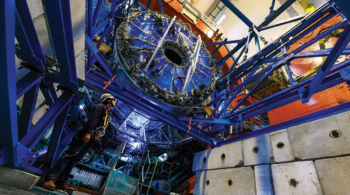 Read article 'Large Hadron Collider: the experiments strike back'
Read article 'Large Hadron Collider: the experiments strike back'
Large Hadron Collider: the experiments strike back
During the next two years of long-shutdown two (LS2), the LHC and its injectors will be tuned up for high-luminosity operations.











